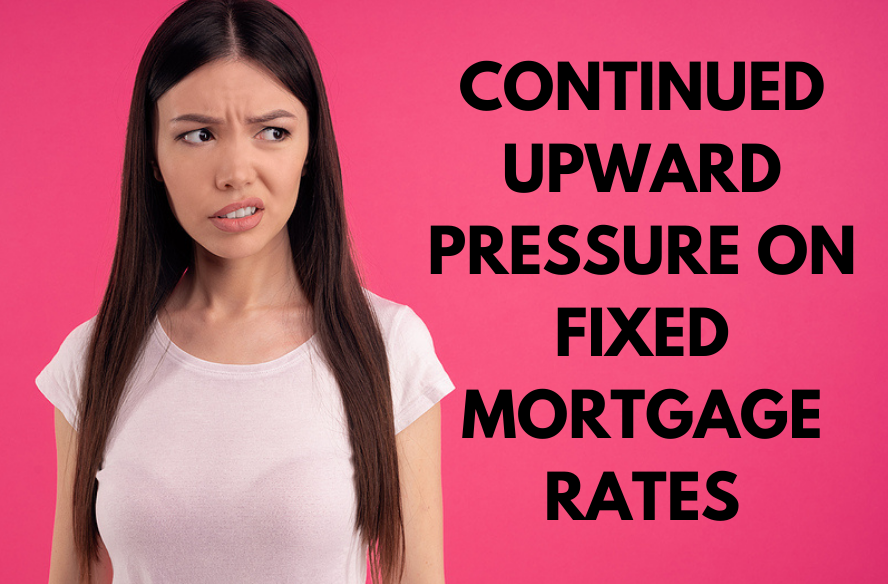Last week, it appeared as though the upward trend on fixed mortgage rates had plateaued, and showed possible signs of reversal. However, the bond yields shot up again at the end of the week, breaking through resistance and therefore continuing the upward trend.
I was originally thinking that fixed mortgage rates were going to settle back down. While this is still possible, I’m starting to question as to whether this will happen. It seems as though the bond market is preparing for full economic recovery. If it turns out they jumped the gun, then it would just be a matter time before the trend reverses. Time will tell of course.
5 year fixed mortgage rates now range from 1.79% to 2.14%, which is at the same levels as they were last week. If the bond yields continue to trend upward, then we’ll definitely see more upward movement to fixed rates.
Shorter Term Fixed Rates
This upward pressure on fixed rates applies to 5 year terms. Mortgage rate pricing is determined by the cost of funds to a mortgage lenders. When their cost goes up, they then need to increase their rates. The same applies when their cost goes down of course. While the cost of funds on 5 year terms has increased, there has been minimal change to shorter terms, meaning there are some great deals on shorter terms.
There was a time when shorter term fixed rates were lower than 5 year terms. This changed at the end of 2016 with the announcement of new mortgage regulations which shook up the mortgage industry and changed the way mortgages were priced. This led to 5 year rates being lower than shorter term options, which all but eliminated the demand for shorter term mortgages.
Fast forward five years today, and we’re once again seeing shorter term fixed options lower than their five year counterparts. They have become attractive once again with 3 year fixed rates as low as 1.44%* or 4 year fixed rates as low as 1.59%*.
Variable Rates Are King
While fixed mortgage rates rise, variable rate mortgages remain unchanged. The Bank of Canada is firm on their stance on maintaining the status quo until sometime in 2023. While another rate cut is possible, I would say it’s unlikely.
With fixed mortgage rates on the rise, variable rate mortgages are the most popular options these days. The spread between 5 year fixed rates and 5 year variable continues to widen, which ranges from 0.59% to 0.80%, depending on your situation. We haven’t seen spreads this large in years, which gives you added protection against future rate increases. This larger spread would allow you to easily sustain multiple rate increases long the way. By the time the BOC starts to increase rates, you’ll have a very large head start. Even if your variable rate climbs up over today’s lowest 5 year fixed rates, you would almost certainly still come out ahead. It would just start to chip into your savings. I’ll be speaking about this in detail in an upcoming blog.
The Future Of Prime Rate
Eventually, the Bank of Canada will need to increase rates. When they do, I would not expect anything too radical. Once our economy is well on its way to recovery, which is years down the road, we may see more frequent increases to prime rate. Remember that prime rate can float in either direction. If it increases a few times, this does not mean that there won’t be cuts to follow. There WILL be cuts again in the future. It’s just a matter of when. Time will tell and anything can happen.
*The lowest mortgage rates are available for insured mortgages, or for those with 35% or greater down payment or equity. Original purchase price must be under $1 million, OR home must have been purchased prior to November 30, 2016. (some exceptions apply).








Leave A Comment